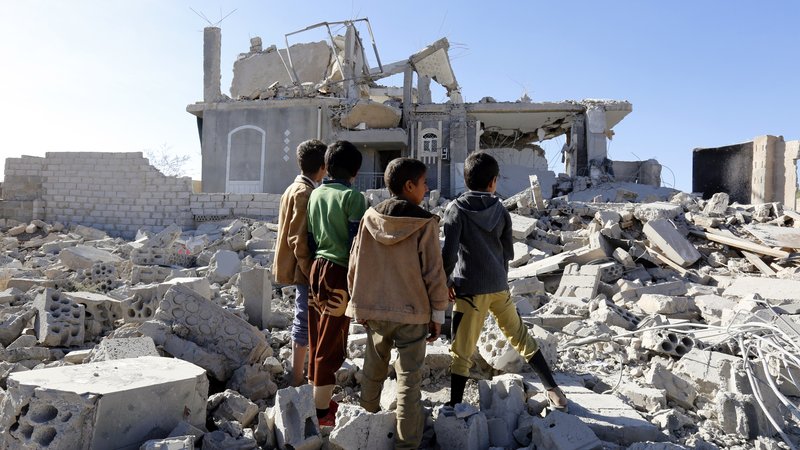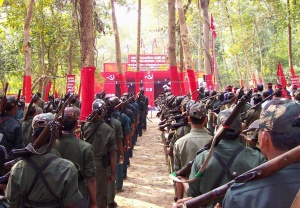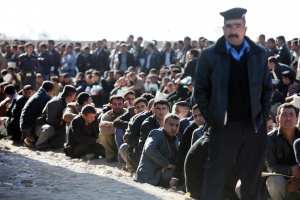The Arab coalition’s operation against the Houthis in Yemen has been heavily bombarding Hudaydah for days. Hudaydah is a Yemeni port city on the Red Sea that is of great strategic significance. Through it, the Houthis have established a support line to give supplies to their base in the capital Sana’a.
A week ago, the Arab coalition led by Saudi Arabia and the United Arab Emirates began a major offensive to assist the internationally recognized Yemeni Government to retake control of the city. On Monday, the coalition stated that it had killed 600 Houthi fighters and destroyed more than 200 targets since the operation began.
The UAE, the biggest contributor to the coalition after Saudi Arabia, estimates that there are 3,000 Houthi fighters in Hudaydah and that the battle is over the airport where coalition forces have said they were based on the western side while the Houthis are in the north. On Tuesday, the Yemeni Army claimed they had taken full control of the airport, thus cutting the Houthis main supply-line, a major advance in its attempt to retake full control of Hudaydah. Outcomes, however, remain to be seen.

Around 27 million people have been caught in the middle of Yemen’s war. AFP/Reuters
The latest offensive has alarmed the United Nations because Hudaydah accounts for 80% of Yemen’s humanitarian supplies and serves as a lifeline for relief from an impending famine. The United Nations has warned that the famine crisis in Yemen could be one of the worst the world has ever seen, threatening more than eight million Yemenis. Earlier this month, The Red Cross evacuated workers from Hudaydah amid rising security concerns.
Meanwhile, UN officials held administrative talks with the Houthis over the city’s port to maintain the flow of assistance. When the war in Yemen broke out in 2015, the Houthis managed to exile the internationally recognized government of Abdrabbuh Mansur Hadi to Riyadh. However, last week, Hadi and many members of his government returned to Aden, with permission from the coalition, for the first time in a year. Hadi’s return signals optimism on the ground but it does not guarantee an end to the conflict and the humanitarian crisis continues.
Hudaydah is home to 400,000 people. The coalition’s conundrum in Hudaydah is that civilians have no place to go. Gas prices have increased, there has been no genuine effort to protect civilians in harm’s way, food is scarce and getting medicine to Yemenis in the populous areas of Northern Yemen is near impossible, spelling all but worst-case scenarios for locals. The rub with the Arab coalition offensive from a military perspective is that for there to be a winner and loser the coalition might wage an operation that could take two more months causing untold devastation to an already devastated country.
Such humanitarian conditions would inevitably undermine peace. This state of affairs suggests point to realities: ongoing negotiations have failed, and there is either a military solution or no solution at all. No one, not the Arab coalition, the Houthis, nor the Yemeni Government are backing down. Each is choosing self-interest over consideration for civilians and that is most devastating of all.

At least seven Yemeni civilians were killed, including a child, and more than sixty injured when the US-backed Saudi-led aggression coalition launched over 46 airstrikes on several provinces of Yemen during the past 24 hours, officials and medics told Yemen News Agency on Monday.
That there is no military solution in Yemen in a foregone conclusion, but a political solution must be pursued. For that, all parties to the conflict must be willing to negotiate. There have been negotiations between the EU Four (France, United Kingdom, Germany, and Italy) with Iran, which have seen baby steps toward a political solution. Europe has shown goodwill toward Iran with its willingness to have peace talks, but there is persistent doubt in the Arab Coalition about moving toward serious peace negotiations and political procedures to end the crisis.
27,000 people have been killed in Yemen since the start of the war in 2015 and predictably the war is destroying the country. 17,000 airstrikes have been executed by the Arab coalition, backed by the United States and European powers, with a third of them hitting non-military targets. Extreme food, water, and medical supply shortages exemplify Saudi Arabia’s blockade on imports.
Half of Yemen’s medical facilities have been destroyed, 8,000,000 people are on the brink of starvation, 2,000,000 children face malnutrition, and a Cholera outbreak has plagued the country. Yemen remains the world’s worst man-made humanitarian crisis according to the United Nations. Schools, hospitals, roads, and markets have also suffered from bombing campaigns during three years of war. Monitoring groups like Human Rights Watch and Amnesty International get no rest.
The Hudaydah situation is built on an already dire humanitarian crisis with two dimensions: civilians in the city face the threat of constant artillery fire and aerial bombardment. Additionally, the disruption of supplies moving through the port is consummate. Even in mass ‘Houthi-free’ sections of Yemen, there remains a lack of stability, a failure on the government’s part to manage the situation, and the mismanagement of war zone finances.
How to back away when both sides seek total victory with the Arab coalition having invested a ton to look like victors? Perhaps the most realistic scenario would be for the United Nations to propose a settlement wherein Houthis would surrender the port to the Arab coalition and the Yemeni Government could make room for negotiations and a political solution in exchange for peace.
Of all the Middle East conflicts, Yemen is one where things could be manageable were their political will on both sides sufficient to meet at a negotiating table. The fighting must stop, military force mustn’t advance political agendas, The UN must issue a ceasefire and humanitarian assistance like food, shelter, and medicine must reach displaced Yemenis. Regional dialogue on Yemen must advance a power-sharing system.
Thereafter the UN must oversee a free election and Yemenis must adopt a constitution that makes room for a new president and political system. The United States could use its leverage to end the crisis. And indeed congressional voices are calling even now for the U.S to stop the disaster in Yemen and take steps to aid the humanitarian situation. Absolute victory is beyond everyone’s grasp in Yemen, but the cost in human lives even to a prospective victor is too great. It is time for Yemen to be a cohesive country again.


























